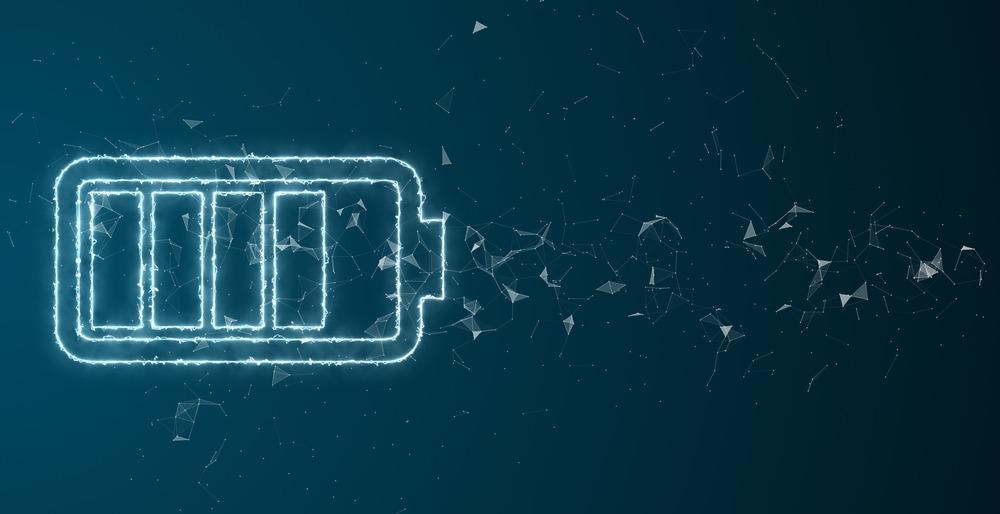 By Surbhi JainReviewed by Susha Cheriyedath, M.Sc.Jun 10 2022
By Surbhi JainReviewed by Susha Cheriyedath, M.Sc.Jun 10 2022In a review recently published in the journal ACS Applied Energy Materials, researchers discussed the utility of de-alloyed water- and air-sensitive nanoporous metals and metalloids for emerging energy applications.

Study: Dealloyed Air- and Water-Sensitive Nanoporous Metals and Metalloids for Emerging Energy Applications. Image Credit: Immersion Imagery/Shutterstock.com
Background
Nanoporous metals and metalloids in bulk are appealing for a variety of applications. Dealloying is a selective leaching procedure used to create bulk nanoporous metals and metalloids. When manufacturing nanoporous metals made of valuable elements, electrolytic dealloying and free corrosion in aqueous solutions have been frequently used.
Although precious metal nanostructured metals are promising for multiple (electro)chemical applications, precious metals are expensive and thus unsuitable for scaling. Earth-abundant water- and air-sensitive nanostructured metals and metalloids have attracted much attention in recent years because of their wide variety of energy applications.
Due to an inherent and fundamental problem, conventional synthesis of these earth-abundant metalloids and metals into nanoporous metals proves difficult or impossible. Their reactive nature facilitates the preparation of a passive oxide film that could hinder their performance in several applications. To address this problem, the community has devised several different dealloying procedures.
About the Study
In this study, the authors discussed the dealloying systems and their reaction mechanisms, as well as real examples of their manufacture and use in energy applications. Their benefits and limitations, with a focus on recyclability, complexity, and scalability, were also discussed. The general chemical reaction mechanisms connected with various dealloying procedures for manufacturing air- and water-reactive nanoporous metals and metalloids were clarified.
The team used the creation of nanoporous gold (NP-Au) from Au-Ag alloys as a model system to unravel the chemical reaction processes governing the fabrication of precious nanoporous metals by free corrosion and electrolytic dealloying in aqueous solutions.
The reaction processes of different dealloying procedures that enable the development of these air- and water-sensitive compounds were explained. The utility of water- and air-sensitive nanoporous materials as the battery electrodes, benzene hydrogenation catalysts, electrocatalysts for nitrogen reduction and oxygen evolution processes, and on-site hydrogen generation was demonstrated.
The researchers discussed various fabrication approaches for producing air- and water-sensitive nanoporous metals and metalloids for emerging energy applications. The processes of these newer approaches were described, with the benefits and downsides of several methods reviewed with a focus on recyclability, complexity, and scalability.
Observations
Since the battery was run below the accommodation volume limit, the lifetime of the NP-Si electrode was extended for over 1500 cycles when cycled continuously to 1000 mAh/g. On the other hand, the NP-Si electrode had a considerably larger starting capacity than nonporous Si nanoparticles when cycled at a constant current at 0.5 C. In a CO2 atmosphere, heat-induced breakdown of Mg2Si into Mg and Si occurred at 500-700 °C, when Mg interacted with CO2 to create MgO and carbon.
Compared to bulk Zn powder, the NP-Zn had a greater capacity and cyclability. Bulk Zn only produced 1/3 of that capacity for 25 cycles before short-circuiting due to dendritic development, but NP-Zn delivered a capacity of 328 mAh/g at 40% DoD for 200 cycles. Granular NP-Sn had superior cycling stability than its nanowire equivalent and retained 55% of its capacity after 95 cycles at 40 mA/g.
The synthesis of chemically reactive nanoporous elements was well suited to air-free electrolytic dealloying in anhydrous organic solvent electrolytes. The reactive elements could also be made into almost oxide-free nanoporous materials using the vacuum thermal dealloying process.
Furthermore, the postreaction condenser allowed for the recovery of sacrificial materials, which improved the process's long-term viability. pH-controlled dealloying and galvanic replacement were based on simple operating principles in aqueous and/or organic electrolytes.
The main benefit of pH-controlled dealloying was that it was relatively simple, as it required no use of strong oxidizing acids as in conventional free corrosion dealloying. Reduction-induced decomposition and thermal decomposition could both use compound precursors instead of alloy-type precursors. These processes were also adaptable because of the plethora of chemical precursors.
Due to the use of top-down procedures where huge alloy precursors could be used, liquid metal dealloying was one of the first methods to create less noble nanoporous materials. It was also ideal for scale-up fabrication.
Conclusions
In conclusion, this study presented a system to understand the redox chemistry involved in dealloying and the fundamental hurdles to producing water- and air-sensitive nanoporous metalloids and metals.
The authors believe this study will be useful within and beyond the dealloying community. They also mentioned that they are looking forward to seeing what the future holds for water- and air-sensitive nanoporous metalloids and metals.
Disclaimer: The views expressed here are those of the author expressed in their private capacity and do not necessarily represent the views of AZoM.com Limited T/A AZoNetwork the owner and operator of this website. This disclaimer forms part of the Terms and conditions of use of this website.
Source:
Fu, J., Welborn, S. S., Detsi, E., Dealloyed Air- and Water-Sensitive Nanoporous Metals and Metalloids for Emerging Energy Applications. ACS Applied Energy Materials (2022). https://pubs.acs.org/doi/10.1021/acsaem.2c00405